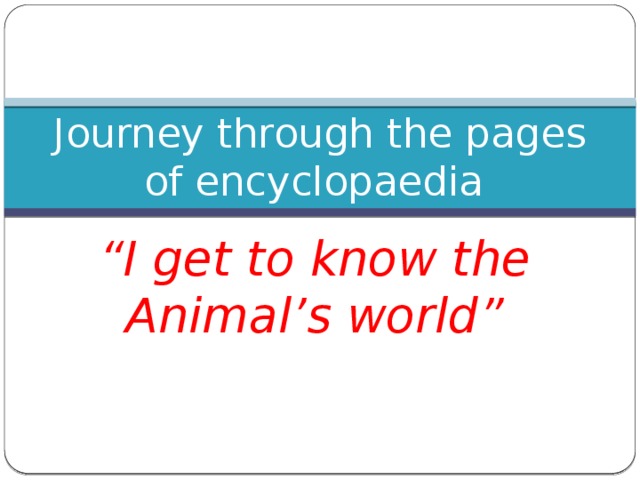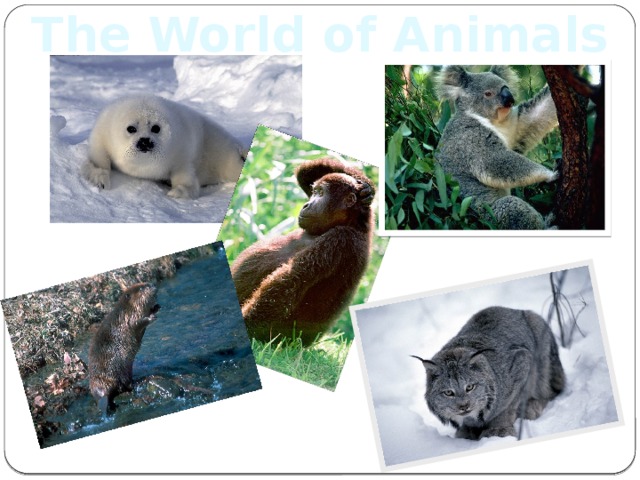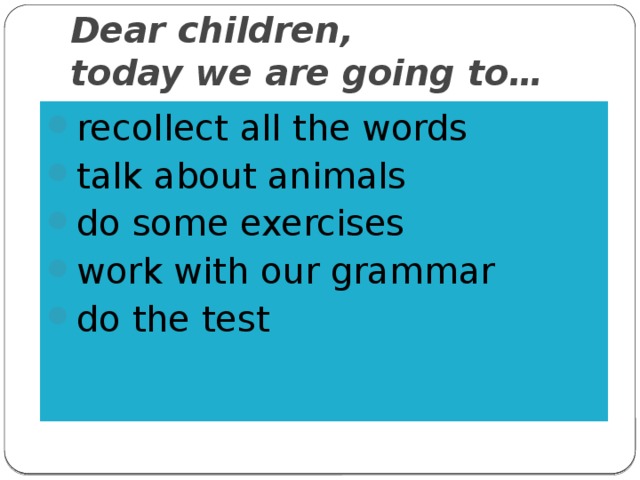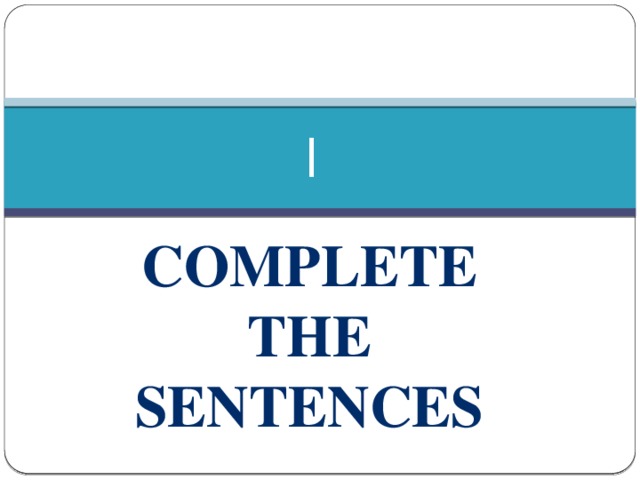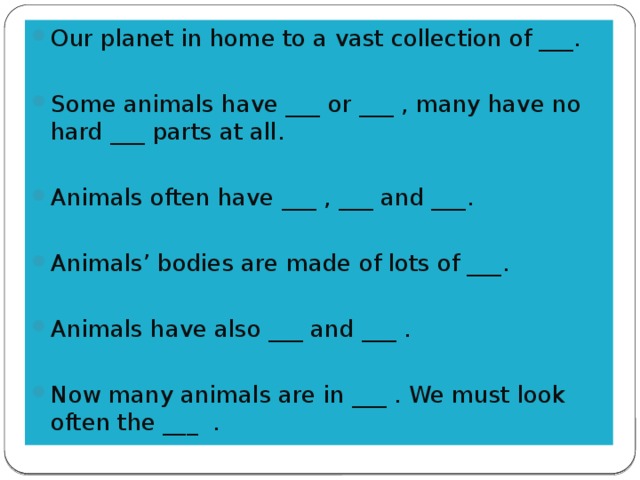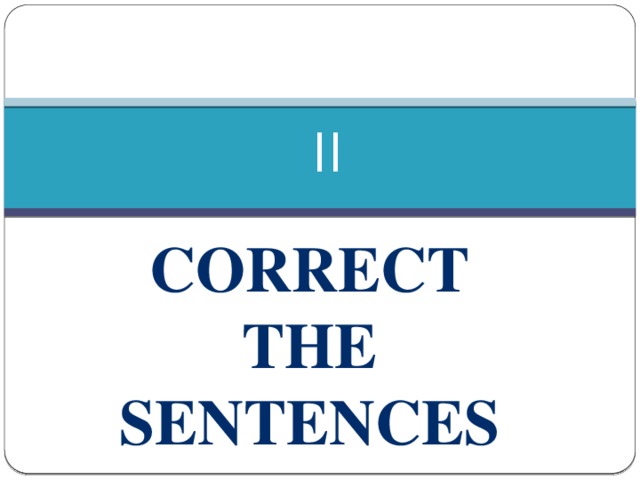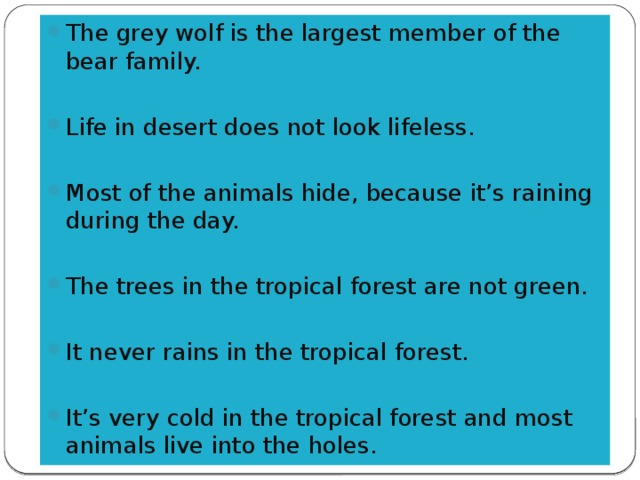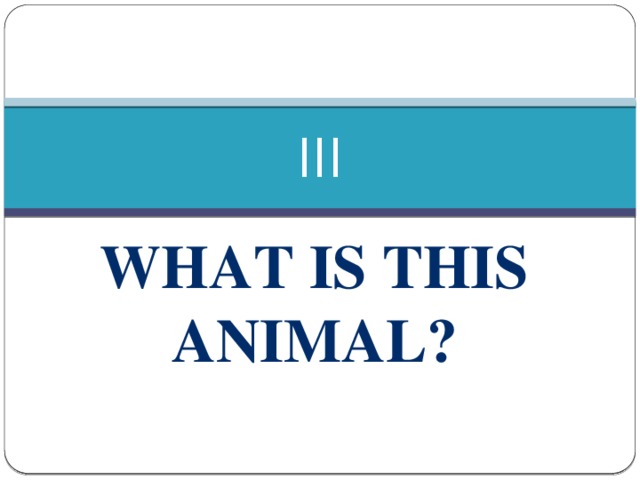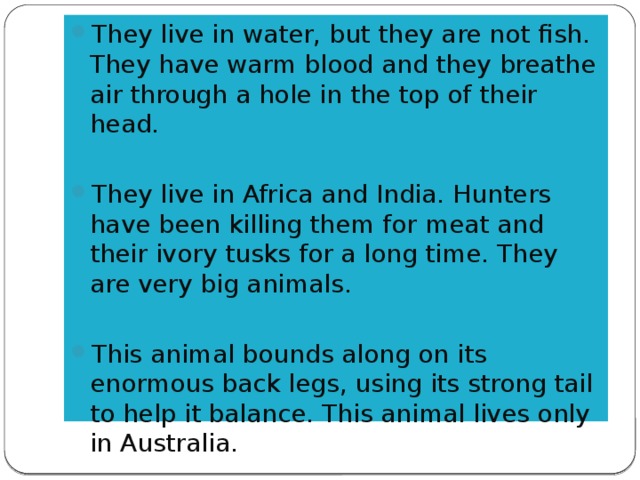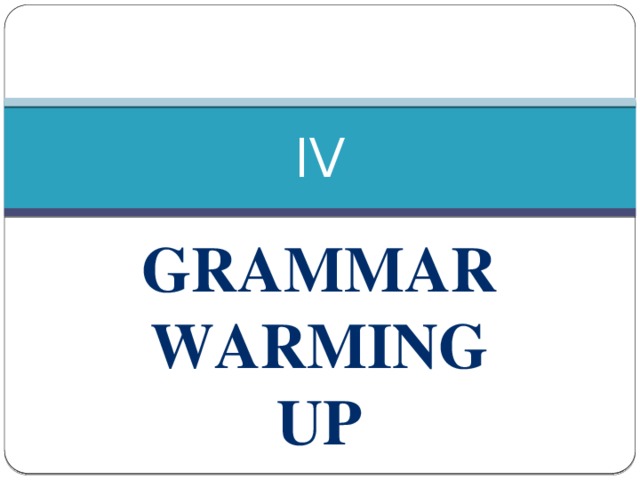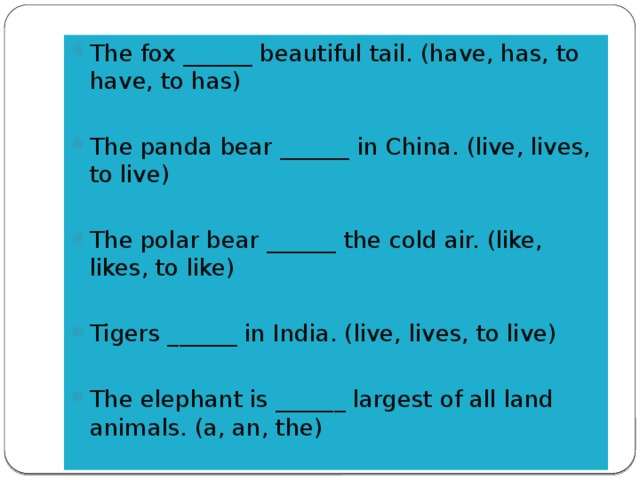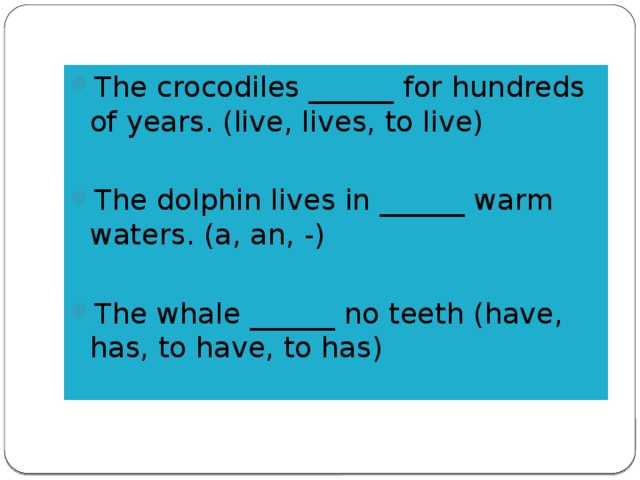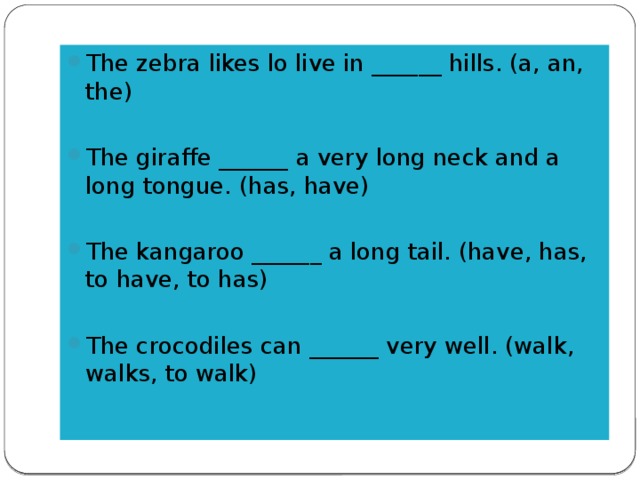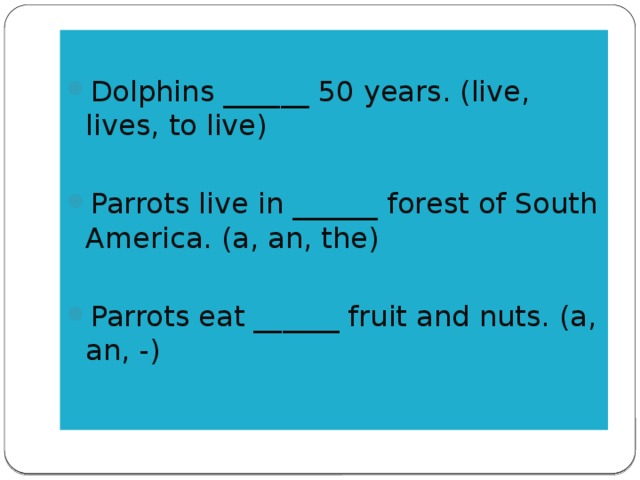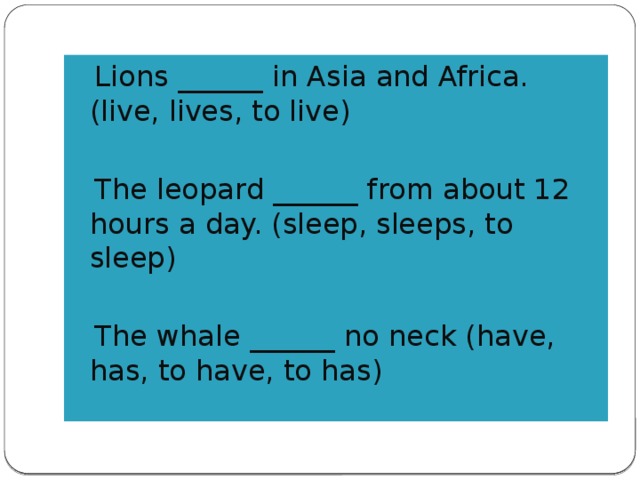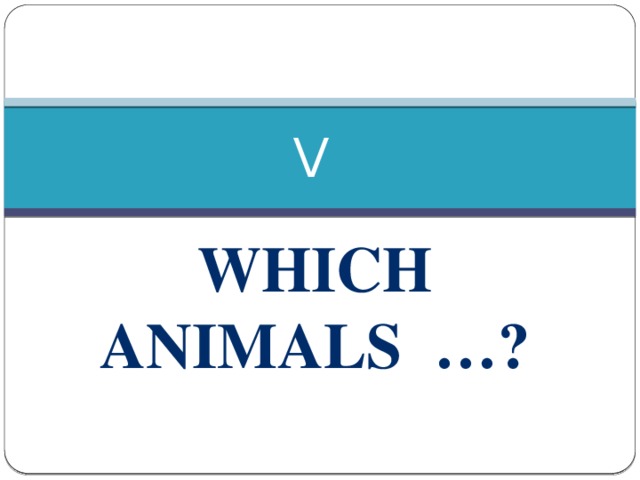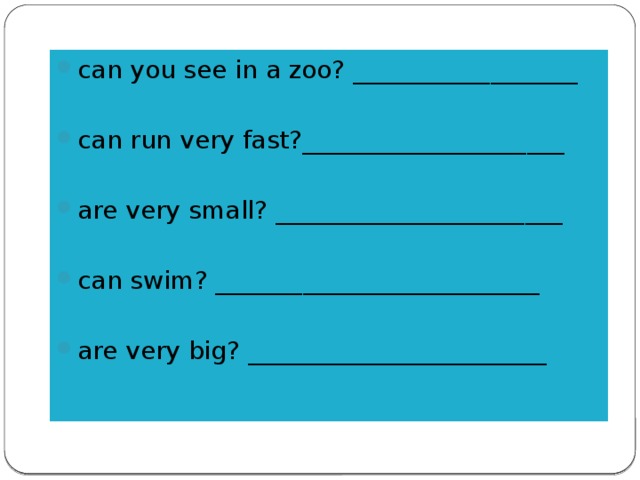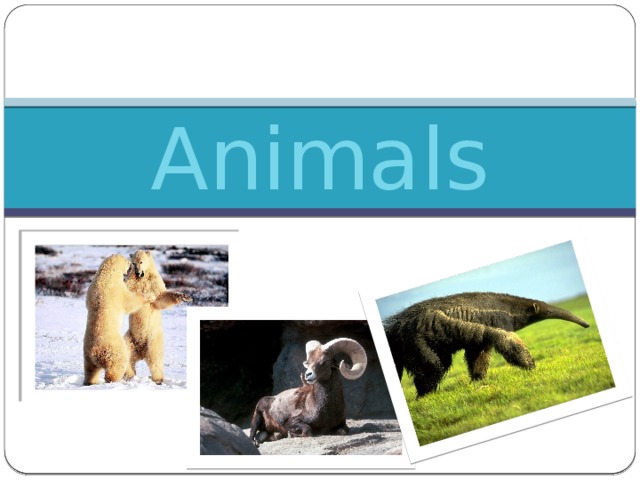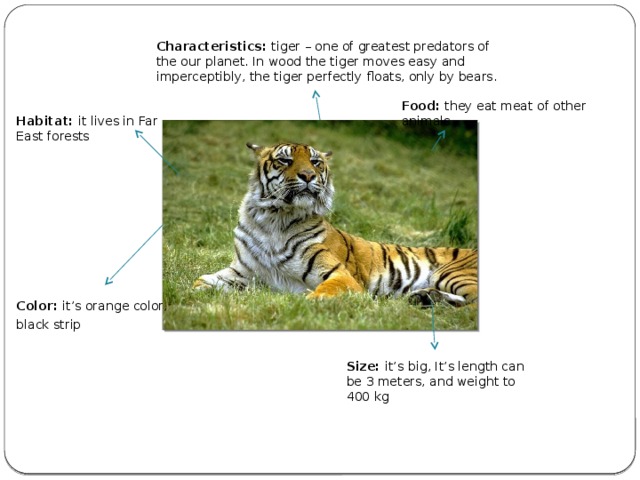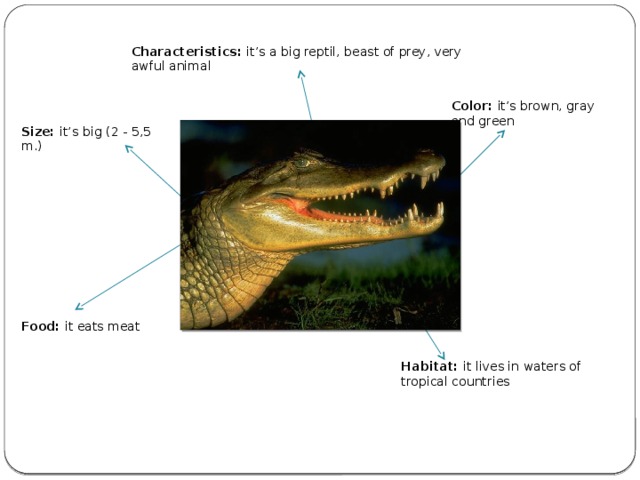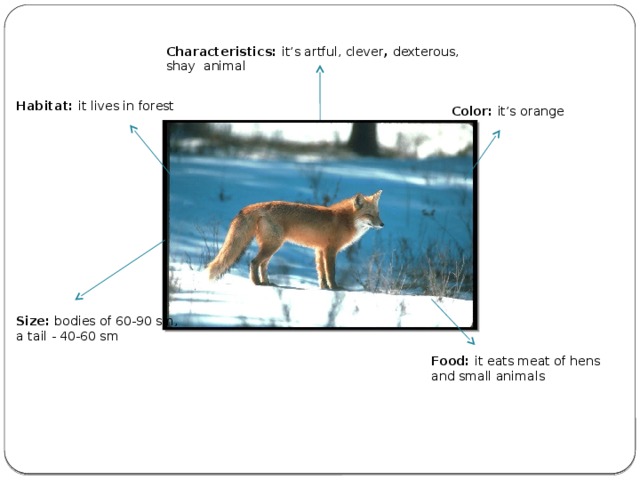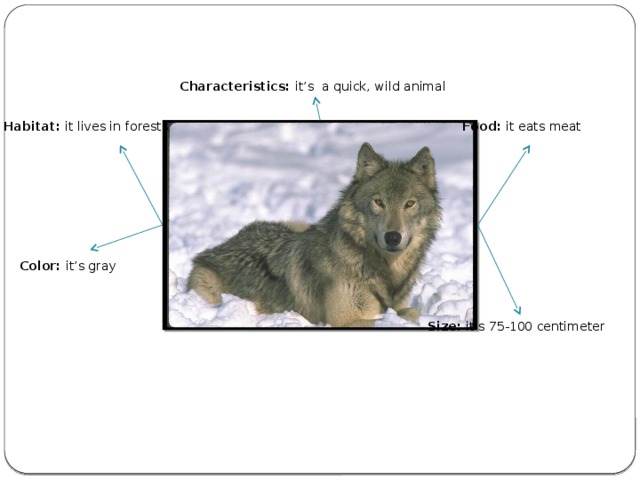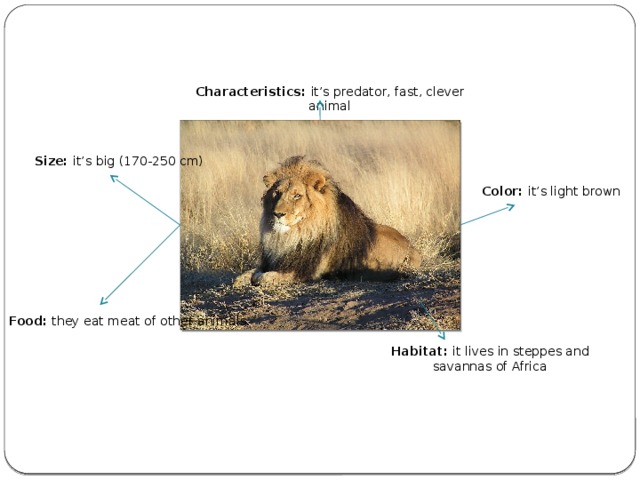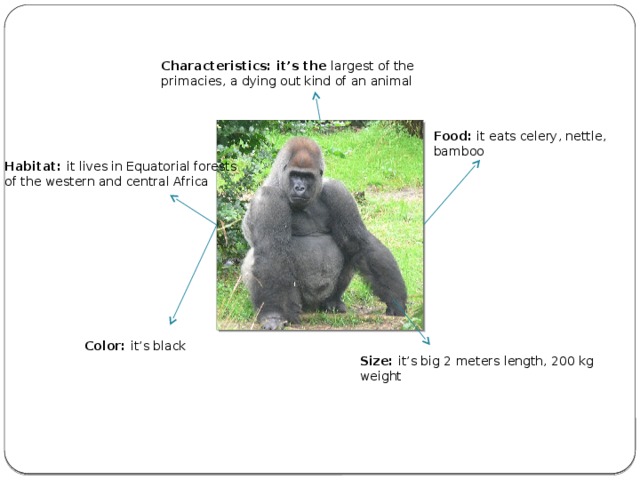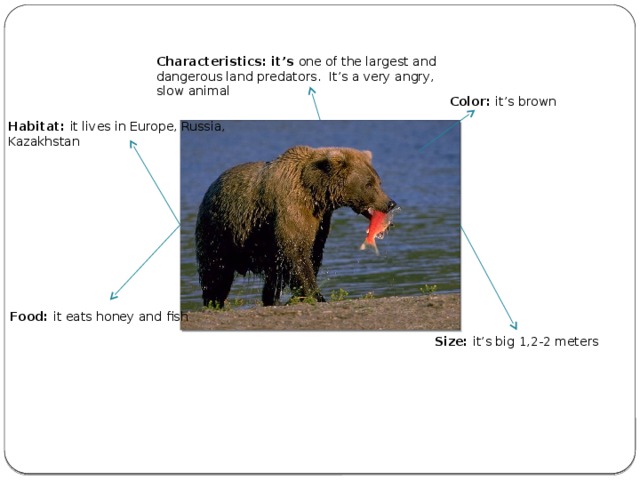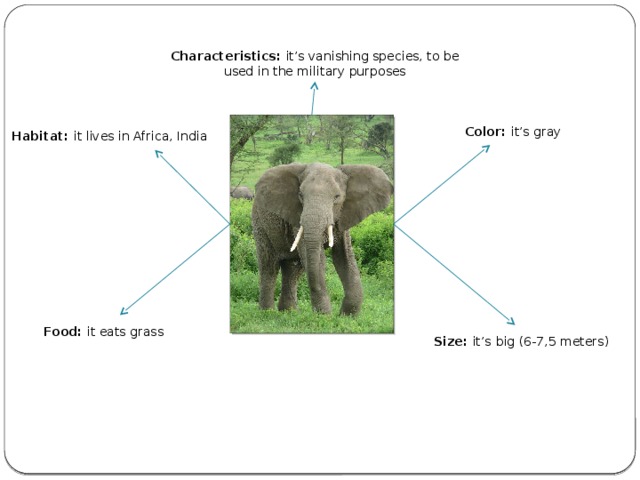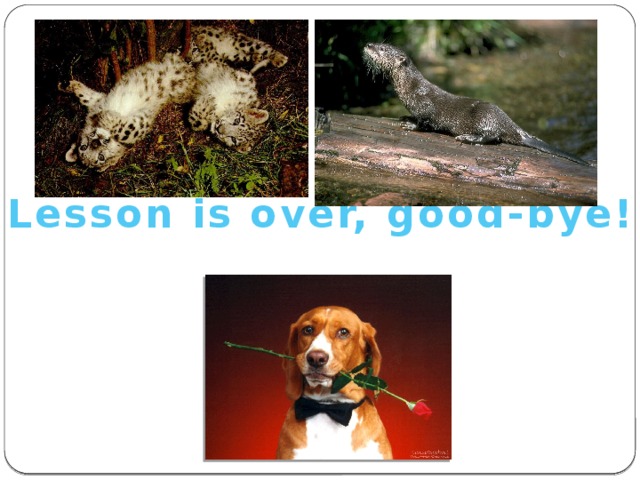Урок по данной теме несёт обобщающий характер. урок строился на основе следующих стратегий: заверши предложение , исправь ошибку, отгадай, что это за животное, грамматическая разминка, назови животных, которые.... Данные стратегии позволили в полном объёме проанализировать и выявить знания учащихся по изученной теме.
Создайте Ваш сайт учителя Видеоуроки Олимпиады Вебинары для учителей
Мир животных
Вы уже знаете о суперспособностях современного учителя?
Тратить минимум сил на подготовку и проведение уроков.
Быстро и объективно проверять знания учащихся.
Сделать изучение нового материала максимально понятным.
Избавить себя от подбора заданий и их проверки после уроков.
Наладить дисциплину на своих уроках.
Получить возможность работать творчески.
Просмотр содержимого документа
«Мир животных »
Полезное для учителя
Распродажа видеоуроков!
1520 руб.
2530 руб.
1510 руб.
2510 руб.
1610 руб.
2690 руб.
1610 руб.
2690 руб.
ПОЛУЧИТЕ СВИДЕТЕЛЬСТВО МГНОВЕННО
* Свидетельство о публикации выдается БЕСПЛАТНО, СРАЗУ же после добавления Вами Вашей работы на сайт
Удобный поиск материалов для учителей
Проверка свидетельства
